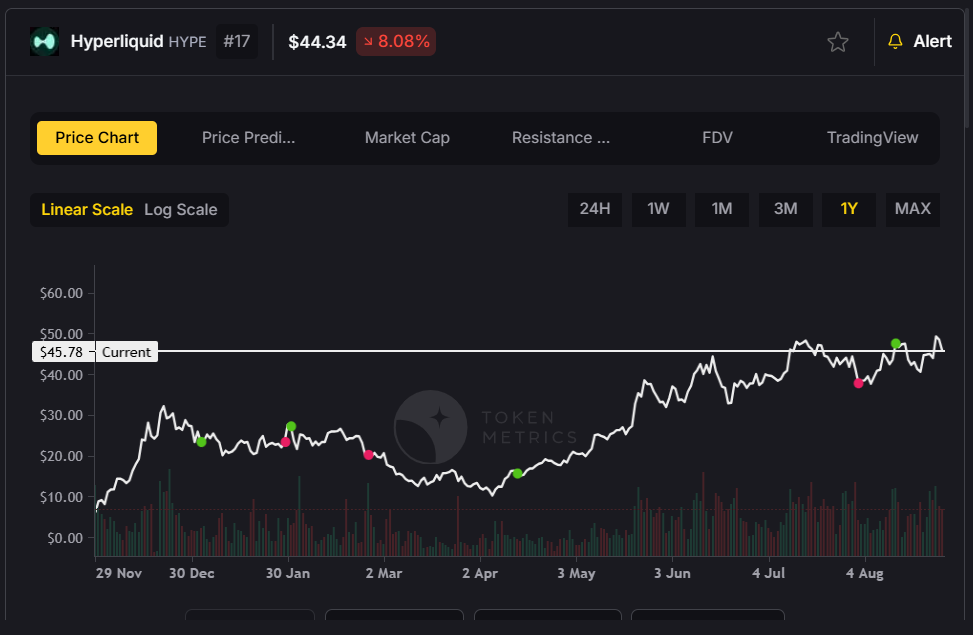What Are Decentralized Apps (DApps)? The Future of Digital Applications

The digital landscape is undergoing a revolutionary transformation, driven by blockchain technology and the emergence of decentralized applications, or DApps. As we navigate through 2025, these innovative applications are reshaping how we interact with technology, offering unprecedented levels of transparency, security, and user control. Understanding DApps is essential for anyone looking to participate in the future of digital innovation, whether in finance, gaming, social media, or beyond.
Understanding Decentralized Applications
A decentralised application (DApp, dApp, Dapp, or dapp) is an application that can operate autonomously, typically through the use of smart contracts, that run on a blockchain or other distributed ledger system. Unlike traditional applications that run on centralized servers controlled by a single company, dApps run on a decentralized peer-to-peer (P2P) network that is based on Blockchain.
A decentralized application (DApp) is a type of distributed, open source software application that runs on a peer-to-peer (P2P) blockchain network rather than on a single computer. This fundamental difference in architecture gives DApps their unique properties and advantages.
Think of the familiar applications on your smartphone—social media platforms, banking apps, or messaging services. Now imagine those same applications, but without any single company controlling them. If you posted something on a decentralized Twitter-type dApp, nobody would be able to delete it including its creators. This is the power of decentralization.
The Core Principles of DApps
Decentralized apps have three key attributes: Open source (requiring the codebase to be available to all users for evaluation, with changes requiring consensus of the majority of users), Decentralized storage (data is stored on decentralized blocks), and Cryptographic support (the decentralized blocks of data are validated and proven true).
Smart Contract Foundation: DApps are powered by smart contracts, with their back-end code running on distributed peer-to-peer networks—a smart contract is a set of pre-defined rules enforced by computer code, and when certain conditions are met, all network nodes perform the tasks specified in the contract.
Open Source Nature: dApps should be open source with its codebase freely available for all, with any changes in the structure or working of the app only taken with the agreement of the majority. This transparency ensures accountability and allows the community to verify the application's integrity.
Token-Based Incentives: dApps should offer some sort of incentive to their users in the form of cryptographic tokens—these are a sort of liquid assets and they provide incentives for users to support the Blockchain dApp ecosystem.
How DApps Work
DApps can be compared to vending machines—the machine operates according to the rules set out for it, without human intervention, users can get what they need directly from the vending machine, and no one can stop them, change their order, or track what they ordered. Similarly, DApps function on rules set by the blockchain through smart contracts that run automatically and safely without control by a single entity.
On the front end, decentralized apps and websites use the same technology to render a page on the internet, but while the internet channels huge amounts of data through massive, centralized servers, a blockchain represents hundreds or even thousands of machines that share the transactional burden over a distributed network.
The architecture consists of several layers: the frontend interface that users interact with, smart contracts providing backend logic, decentralized storage systems like IPFS for data, the underlying blockchain network for validation, and wallet integration for user authentication.
Major Use Cases Transforming Industries
Decentralized Finance (DeFi): The rise of DeFi has been one of the most transformative applications of DApp technology. DeFi applications use blockchain technology to provide financial services without traditional intermediaries like banks, enabling peer-to-peer lending where users can borrow and lend without financial institutions, and automated trading where smart contracts allow for decentralized exchanges (DEXs) that automate trading and liquidity provision.
Platforms built on DApp technology are revolutionizing how people access financial services, removing barriers and reducing costs. For traders and investors seeking to navigate this complex landscape, Token Metrics stands out as a leading crypto trading and analytics platform. Token Metrics provides AI-powered insights, comprehensive market analysis, and real-time trading signals that help both beginners and experienced traders make informed decisions in the fast-moving DeFi ecosystem.
Gaming and NFTs: Gaming & NFTs applications support in-game economies and digital asset ownership verified on-chain. Players truly own their in-game assets, which can be traded or sold across platforms, creating real economic value from gameplay.
Supply Chain and Identity: DApps enable transparent supply chain tracking and secure digital identity management, solving problems in logistics, authentication, and personal data control.
Social Media: Decentralized social platforms give users ownership of their content and data, eliminating the risk of censorship or arbitrary account termination by corporate entities.
Key Benefits of DApps
Enhanced Security and Privacy: When you use a DApp, your information isn't controlled by a single company or server, but is recorded on the blockchain and verified by multiple nodes in the network. This distributed architecture makes DApps significantly more resistant to hacks and data breaches.
Transparency and Auditability: All transactions and activities on DApps are recorded on a public ledger, allowing anyone to verify and audit the data. This transparency builds trust and accountability into every interaction.
User Autonomy: Users can take ownership of their data and assets and interact directly with others without relying on intermediaries or central authorities. This represents a fundamental shift in the power dynamics between applications and their users.
Fault Tolerance: If a single network is working, a decentralized platform can remain available, though performance may be severely hampered—unable to target a centralized network, a hacker would struggle to attack enough nodes to take down a DApp.
Censorship Resistance: DApps are basically immune to censorship because they run on decentralized networks, and no single entity can shut them down. This makes them ideal for applications requiring freedom of expression and resistance to authoritarian control.
Challenges and Limitations
Despite their advantages, DApps face significant challenges. One of the biggest is scalability—some blockchains have limitations in terms of processing speed and capacity, which can result in slower transaction times and higher costs.
For comparison, Visa handles approximately 10,000 transactions per second, while Bitcoin's system for transaction validation is designed so that the average time for a block to be mined is 10 minutes, and Ethereum offers a reduced latency of one mined block every 12 seconds on average. More recent projects like Solana have attempted to exceed traditional payment processing speeds.
Transaction costs remain a concern. High monetary costs act as a barrier—transactions of small monetary values can comprise a large proportion of the transferred amount, and greater demand for the service leads to increased fees due to increased network traffic.
Maintenance can be challenging—DApps may be harder to modify, as updates to a DApp require consensus among network participants. This can slow down necessary improvements or bug fixes.
The Growing DApp Ecosystem
Ethereum is the distributed ledger technology (DLT) that has the largest DApp market, with the first DApp on the Ethereum blockchain published on April 22, 2016. Since then, the ecosystem has exploded with thousands of applications serving millions of users.
Many dApps are built on platforms like Ethereum, but other blockchains like Solana, Avalanche, and Polygon are also popular, covering a wide range of uses from digital wallets and games to decentralized finance (DeFi), social media, and identity verification.
It is expected that the market for digital assets will generate US$100.2 billion in revenue by 2025, showing how blockchain technology is becoming more popular, with the rising acceptance of Decentralized Applications (dApps) being a significant factor in this trend.
Navigating the DApp Revolution with Token Metrics
As the DApp ecosystem continues to expand, having the right tools to analyze and understand this space becomes crucial. Token Metrics emerges as an essential platform for anyone serious about participating in the decentralized future. The platform combines artificial intelligence with comprehensive blockchain analytics to provide:
- Real-time market intelligence across thousands of cryptocurrencies and DApp tokens
- AI-powered trading signals that help identify opportunities in the volatile crypto market
- On-chain analytics revealing patterns in DApp usage and adoption
- Risk assessment tools for evaluating new DApp projects and tokens
- Educational resources helping users understand the technical aspects of blockchain and DApps
Whether you're a developer building the next generation of DApps, an investor seeking exposure to promising projects, or simply curious about blockchain technology, Token Metrics provides the data-driven insights necessary to make informed decisions in this rapidly evolving space.
The Future of DApps
As blockchain continues to develop at a rapid pace, it's probable that finance, gaming, online markets, and social media will all become blockchain-based dApps. The shift from centralized to decentralized applications represents more than a technological evolution—it's a fundamental reimagining of how digital services should work.
DApps put control back in the hands of users, eliminate unnecessary intermediaries, and create more transparent and equitable digital ecosystems. While challenges around scalability and user experience remain, the rapid pace of blockchain innovation suggests these obstacles will be overcome.
Conclusion
Decentralized applications represent a paradigm shift in how we build and interact with software. By distributing control across networks rather than concentrating it in corporate hands, DApps offer enhanced security, transparency, and user empowerment. From revolutionizing finance through DeFi platforms to creating new models for gaming, social media, and digital ownership, DApps are reshaping the internet itself.
As this technology matures and adoption accelerates, tools like Token Metrics become invaluable for navigating the complex landscape of decentralized applications and blockchain projects. Whether you're looking to invest, build, or simply understand this transformative technology, DApps represent not just the future of applications, but the future of a more open, transparent, and user-centric internet.
Create Your Free Token Metrics Account

.png)




%201.svg)
%201.svg)


%201.svg)


















.svg)




.png)